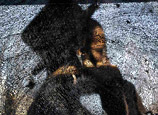William C. Hannas is one of the most provocative writers ever. He believes that writing systems using characters inhibit a type of deep creativity, though its asserted effects are not irreversible.
Hannas, an American linguist, believes alphabets foster early skills in analysis and abstract thinking. By contrast, he writes, "The rote learning needed to master Chinese writing breeds a conformist attitude and a focus on means instead of ends."
"Process rules substance. You spend more time fidgeting with the script than thinking about content," writes Hannas in "The writing on the wall: How Asian orthography curbs creativity" (2003).
Evidently, for a scholar advantageously equipped with the alphabet system, Hannas has made the most of his native ability at abstract thinking.
He also impresses us as eminently bold in bashing a language he does not truly understand, given his dislike for rote learning.
We must make allowances for the fact that in the Internet age, the most extraordinary and unconventional allegations have higher chances of being heard.
But a Chinese scholar, Dr Zhang Xuexin, has found it necessary to take up the cudgel on behalf of his native tongue, by writing a complex laboratory research report on the superiority of Chinese characters.
An assistant professor in psychology from the Chinese University of Hong Kong, Zhang tries to counter Hannas' allegations by marshalling evidence he has collected from cognitive science.
That means pages of quantitative, formally oriented empirical studies, laboratory experiments, data analysis, graphs, and more.
In his research Zhang finds that when Chinese test subjects are reading Chinese characters, there is intensifying activity of brain wave N200, which is less detected with Western test subjects reading alphabet-based material.
Zhang concludes on the basis of these findings that at the early stage of the cognitive process in reading Chinese characters there is a very in-depth visual processing. This is distinct from processing in an alphabet-based writing system, which is essentially aural, he writes, and his findings suggest the Chinese language to be at the apex of human cognitive development.
This effectively rules out the Latinization of the Chinese language as advocated by a very few radicals.
Not all would agree with this cumbersome approach of using esoteric neurological experiments in justifying the existence of one of the oldest writing systems, but stylized, specialized, "scientific" description has become the only way to create the sense of rigor in the prevailing fashion of "human science" studies.
And there is the incentive for academic advancement to which no scholar can be immune.
So Zhang's paper "The Centro-Parietal N200: An Event-related Potential Component Specific to Chinese Visual Word Recognition," was published in the February issue of the one of the most prestigious academic journals, Chinese Science Bulletin, in Chinese.
For a researcher like Zhang, who had been engaged for years in advanced studies at Princeton and Yale, a paper published in a Chinese journal rated "C" is really anticlimactic.
【1】 【2】 【3】
Recommendations:
News we recommend






























 Landmark building should respect the public's feeling
Landmark building should respect the public's feeling


![]()
